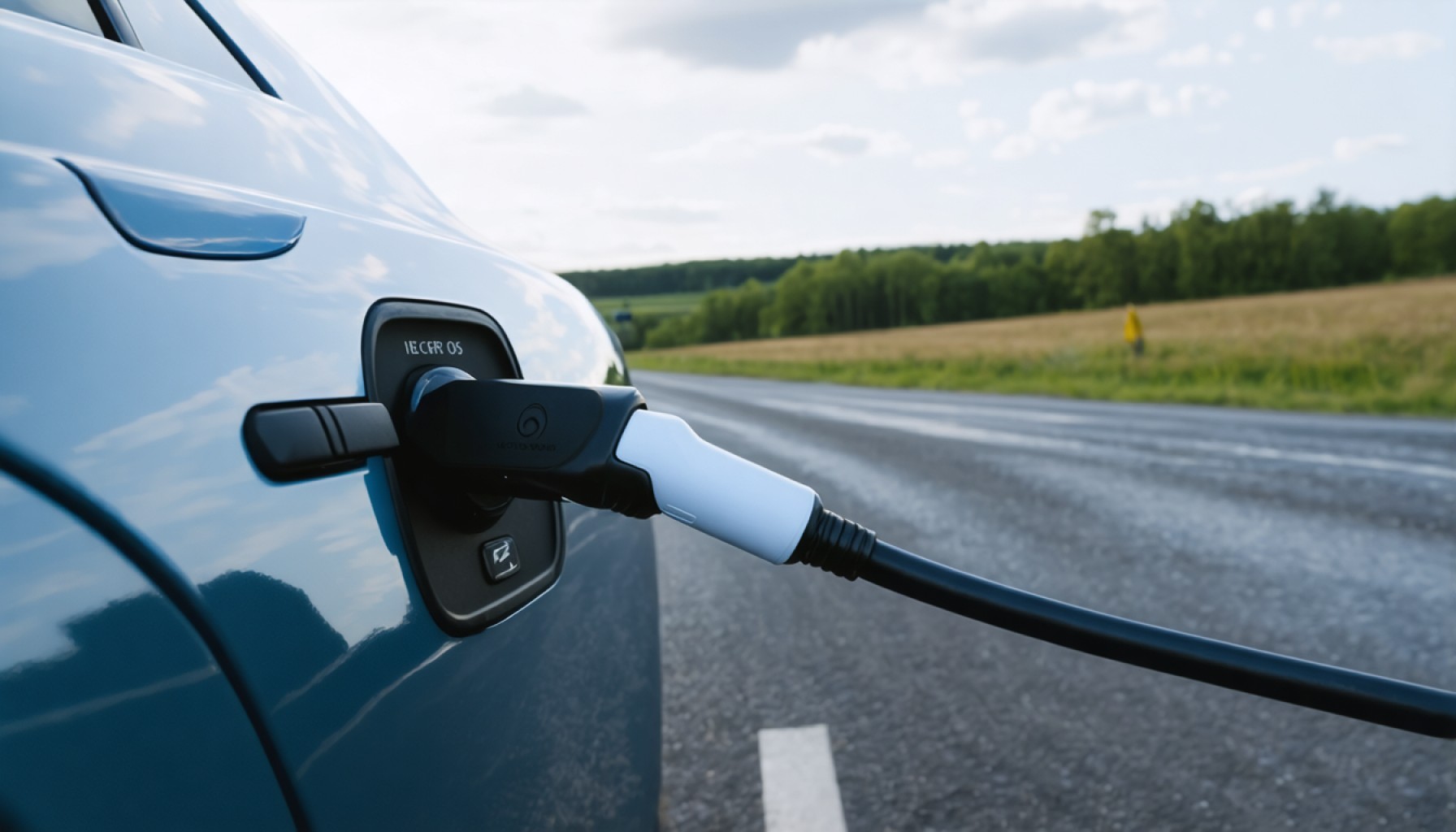- A significant partnership between Pilot Company, General Motors, and EVgo Inc. is expanding the network of fast-charging stations across the U.S.
- Over 130 fast-charging stations have already been established in more than 25 states, enabling long-distance EV travel without range anxiety.
- The initiative aims to install up to 2,000 fast-charging stalls at 500 Pilot and Flying J locations nationwide.
- EVgo’s state-of-the-art chargers allow vehicles to recharge in as little as 15 minutes, enhancing convenience for drivers.
- The project supports the growing demand for EVs, reflected by 1.3 million units sold in 2024, and promotes sustainable transport.
- These charging stations feature premium amenities, including lounges and Wi-Fi, offering a superior experience for EV owners.
- This development signifies a pivotal transformation in American roadways, making electric vehicle travel more accessible and practical.
The quiet hum of electric vehicles (EVs) zipping across American highways once seemed like a far-off dream. Today, it is a reality, and it’s gaining velocity thanks to a groundbreaking collaboration between Pilot Company, General Motors, and EVgo Inc. This dynamic partnership has forged a vast network of over 130 fast-charging stations that lace through more than 25 states, reshaping the landscape for long-distance EV travel.
Imagine cruising down major arteries like I-75 or trekking regional trails from Minneapolis to Milwaukee without the lingering anxiety of a dwindling battery. The strategic rollout of these fast-charging stations, which kickstarted in 2022, is set to transform not just how, but where, electric vehicles can go. At the heart of this endeavor is a shared vision to install up to 2,000 cutt-ing-edge fast-charging stalls at 500 Pilot and Flying J locations across the nation.
These are not just ordinary pit stops. Picture halting at a station where premium amenities await—think cozy lounges, reliable Wi-Fi, and access around the clock. While drivers refresh, their vehicles gulp down the electrons, achieving a remarkable revitalization in as little as 15 minutes, courtesy of EVgo’s state-of-the-art chargers.
This expansion doesn’t merely cater to the boom in sales, which saw an impressive 1.3 million EVs sold in 2024. It’s a strategic handover of convenience and confidence to the growing cohort of electric vehicle owners. With each click of the charging port, a stronger case is made for sustainable transport and its seamless integration into everyday lives.
As these pervasive powerhouses proliferate, they offer more than just convenience. This initiative heralds a transformative chapter in American roads’ history—a chapter where electric dreams become the bustling reality of tomorrow. For every driver, it flags a simple yet profound promise: the next frontier is here, and it’s electrifying.
So, as you steer your vehicle down the road with a silent glide, know that the future is not just near; it is already here—illuminated at every stop by the brilliance of this spirited collaboration.
The Future of American Highways: How EV Charging Stations Are Revolutionizing Travel
Expanding the EV Charging Network
The quiet hum of electric vehicles (EVs) is no longer a distant dream but a booming reality on American highways. The transformative collaboration among Pilot Company, General Motors, and EVgo Inc. has created a network of over 130 fast-charging stations, spanning more than 25 states. This initiative is not just changing the way we drive but also redefining our travel experience.
How Fast-Charging Works
One of the key features of this network is the deployment of fast-charging stations. These stations use high-power chargers, typically around 150kW to 350kW, allowing most EVs to achieve an 80% charge in approximately 15-30 minutes. Tesla’s Supercharger technology also plays a significant role in this field, offering comparable charging speeds for Tesla vehicles.
Real-World Use Cases: Driving Without Anxiety
Thanks to these charging networks, EV users can now plan long road trips with minimal stops for charging. For instance, traveling between cities like Los Angeles and San Francisco or across states like California and Nevada has become increasingly feasible. This convenience reduces “range anxiety,” a common concern among prospective EV buyers.
Market Forecast & Industry Trends
As EV sales continue to surge, with projections estimating over 1.3 million EVs sold in 2024, the demand for charging infrastructure is set to grow. BloombergNEF predicts that more than half of all vehicle sales will be electric by 2040. Companies are likely to invest more in EV infrastructure to capture this growing market.
Controversies & Limitations
Despite the significant advancements, there are challenges. Some areas in the U.S., particularly rural regions, still lack sufficient charging stations, which can hinder EV adoption. Additionally, the electricity grid needs continuous upgrades to handle the increased load from EV charging.
Security & Sustainability
The development of EV charging infrastructure also raises questions about cybersecurity and environmental sustainability. Companies are investing in secure software to protect digital payments and user data. From a sustainability perspective, the focus is on powering these stations with renewable energy to minimize the carbon footprint.
Insights & Predictions
Looking ahead, the industry is moving towards interoperability, allowing EV owners to use different networks seamlessly. Companies are also developing solutions for rapid off-grid charging with renewable sources, which could be pivotal in emergencies and remote areas.
Recommendations & Quick Tips for EV Owners
1. Plan Your Route: Use apps like PlugShare and ChargePoint to map out charging stations along your route.
2. Monitor Charging Trends: Stay informed about partnerships and new station launches to keep up with expanding networks.
3. Consider Vehicle Range: When buying an EV, check the range to ensure it meets your travel needs.
4. Stay Updated with Software Updates: Ensure your vehicle’s software and navigation system are updated for the latest charging station data.
Conclusion
This colossal endeavor signals an electrifying shift in how we conceive transportation. As EV infrastructure evolves, travel becomes not just eco-friendly but also more convenient and enjoyable. For more insights into electric vehicles, visit EVgo and General Motors.
As we accelerate into this transformative chapter in automotive history, one thing is clear: the future of mobility is indeed bright and electrifying.
